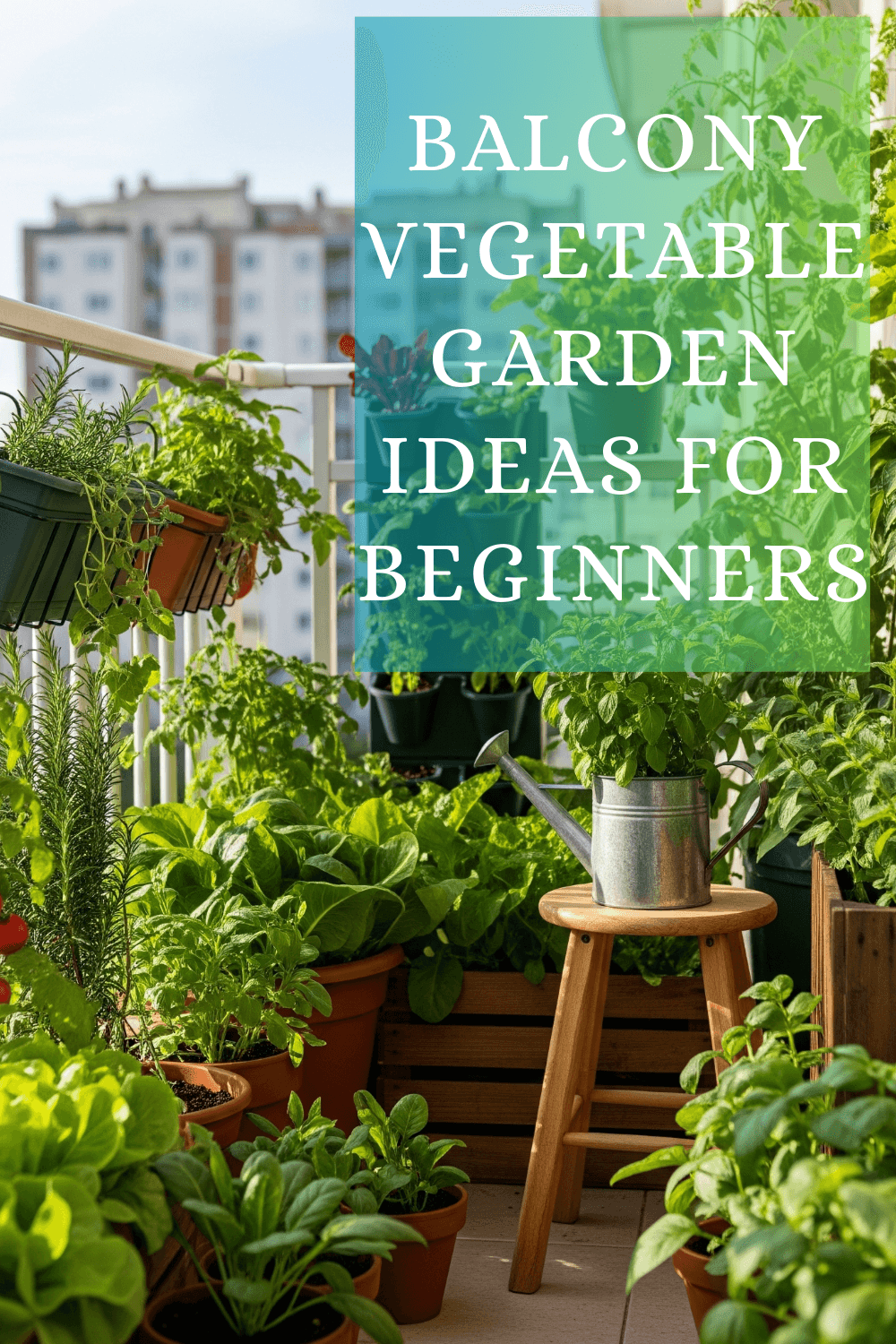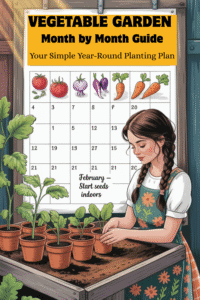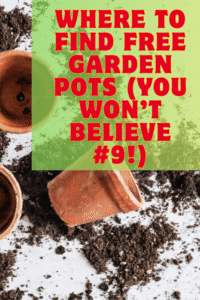Have you ever dreamed of picking fresh vegetables right outside your door? A Balcony Vegetable Garden Ideas for Beginners makes it possible, even if you live in an apartment or a small home with limited space. With just a few pots, soil, and the right plants, you can enjoy fresh produce without needing a big backyard.
In this guide, we’ll go through easy balcony vegetable garden ideas for beginners. You’ll learn what to grow, how to care for your plants, and simple tips to make gardening stress-free and fun.
Why Start a Balcony Vegetable Garden
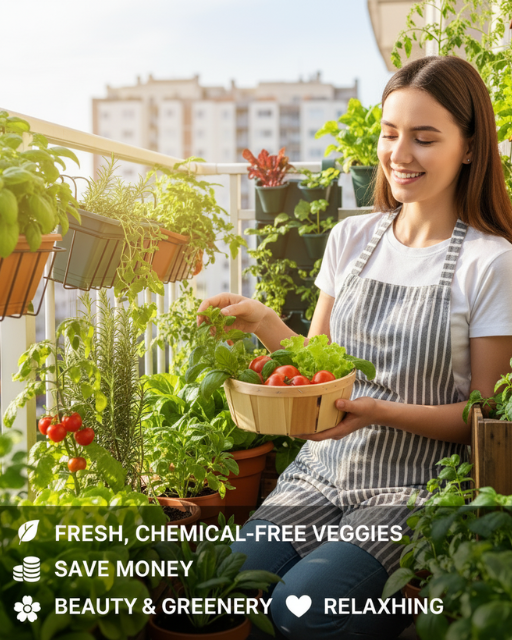
Starting a balcony vegetable garden has many benefits:
- Fresh, chemical-free vegetables at home.
- Saves money on groceries.
- Adds beauty and greenery to your living space.
- A relaxing and rewarding hobby.
If you are a beginner, don’t worry. You don’t need gardening experience. With a few basic steps, your balcony can turn into a green space filled with healthy vegetables.
Choosing the Right Spot on Your Balcony
Light is the most critical factor in balcony gardening. Vegetables need at least 4–6 hours of sunlight daily.
- South or west-facing balconies usually get the best light.
- If your balcony receives less sunlight, consider leafy greens like spinach, lettuce, or herbs that thrive in shade.
- Use mirrors or reflective surfaces to direct more light to plants if needed.
Tip: Observe your balcony for a day to determine how much sunlight it receives before deciding which vegetables to plant.
Best Containers for a Balcony Vegetable Garden
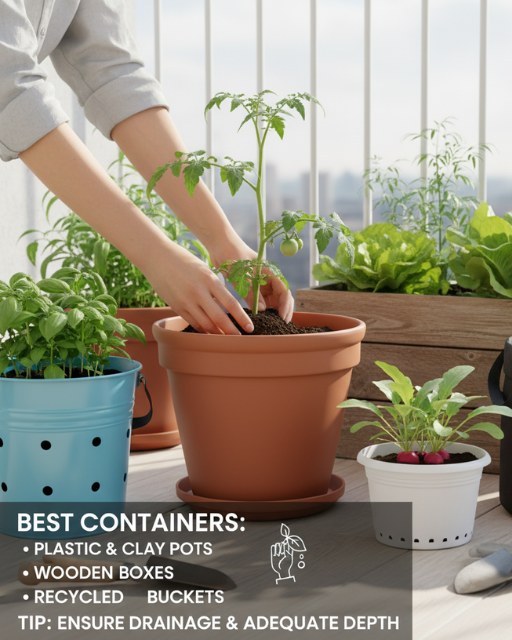
You don’t need fancy pots to get started with gardening. Many containers can work as long as they have drainage holes.
Good container options:
- Plastic or clay pots
- Wooden boxes
- Grow bags
- Recycled buckets or tins
Tip: Ensure containers are deep enough to accommodate the vegetable you are planting. For example:
- Tomatoes need at least 12–15 inches of depth.
- Leafy greens, such as lettuce, can be grown in shallow 6-inch pots.
Easy Vegetables to Grow for Beginners
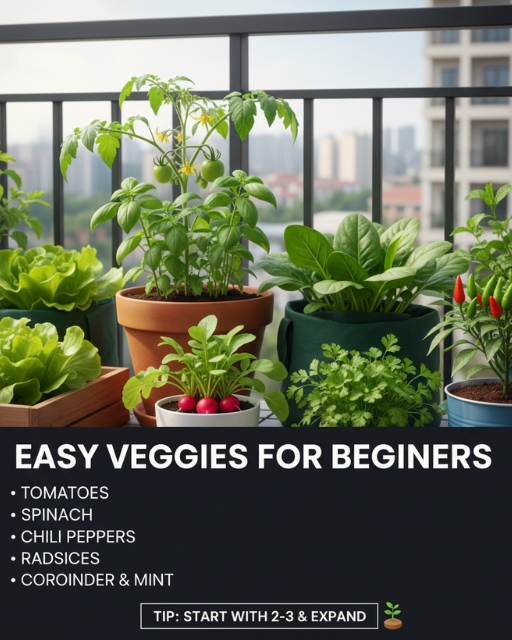
When starting, choose vegetables that grow quickly and require minimal care.
Here are beginner-friendly options:
- Tomatoes – grow well in pots with sunlight.
- Spinach – grows quickly and keeps giving leaves.
- Lettuce – perfect for salads, grows in shallow pots.
- Chili peppers don’t need much space.
- Radishes – ready to harvest in just 3–4 weeks.
- Coriander and mint – great for daily cooking use.
Start with 2–3 vegetables, then expand as you gain confidence.
Soil and Fertilizer for Balcony Gardening
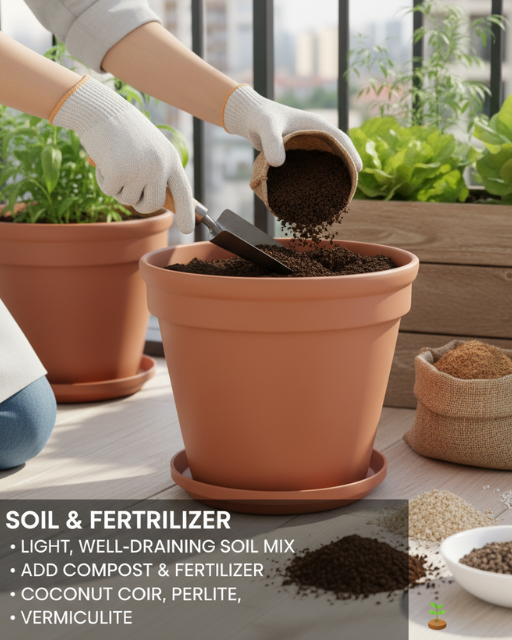
Healthy soil is the secret to good vegetables.
- Use a light, well-draining soil mix. Regular garden soil is too heavy for pots.
- Mix compost or organic fertilizer into the soil to give nutrients.
- You can also use coconut coir, perlite, or vermiculite to keep the soil loose and aerated.
Tip: Add compost every 2–3 weeks to keep plants strong and healthy.
Watering Tips for a Balcony Vegetable Garden
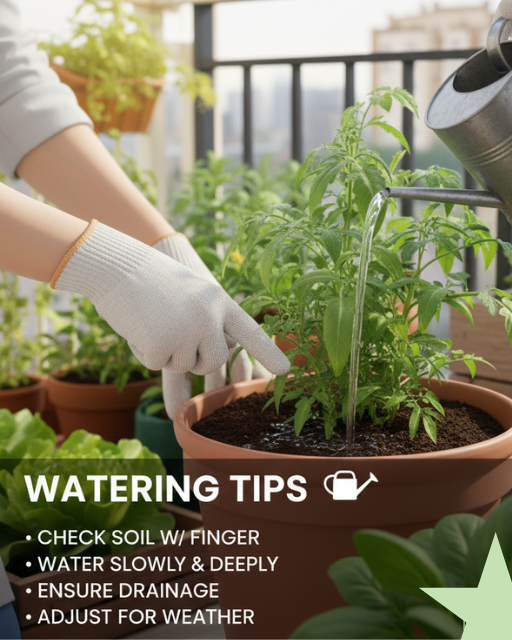
Overwatering is a common mistake beginners make.
- Check the soil with your finger. If the top 1 inch feels dry, it’s time to water.
- Water slowly so that it reaches the roots.
- Make sure extra water drains out of the container.
In hot summers, you may need to water your plants daily. In cooler months, watering every 2–3 days is enough.
Balcony Vegetable Garden Layout Ideas
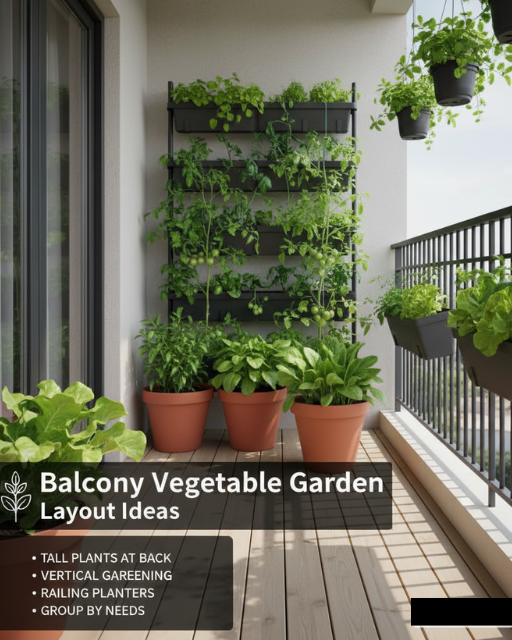
Arranging your plants well saves space and makes gardening easier.
- Place tall plants, such as tomatoes, at the back and smaller ones in front.
- Use vertical gardening with wall planters or hanging pots.
- Try railing planters for herbs or leafy greens.
- Group plants with similar sunlight and water needs together.
This way, your balcony looks neat and plants grow better.
Pest Control for Balcony Vegetables
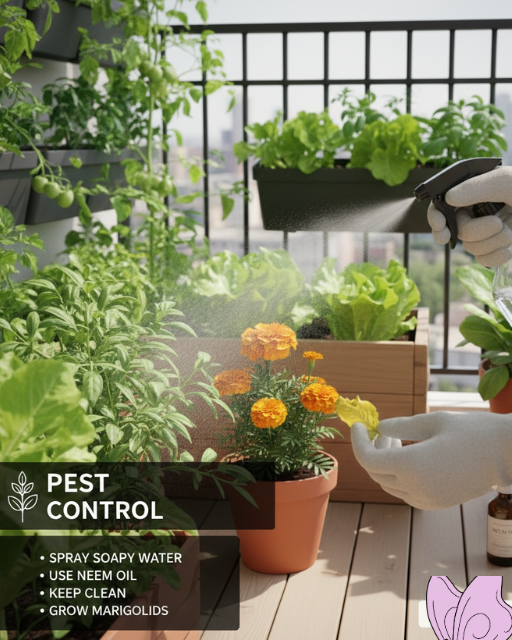
Pests like aphids and caterpillars may attack your plants. However, don’t worry – you don’t need harsh chemicals.
Natural pest control tips:
- Spray soapy water on leaves to remove insects.
- Use neem oil spray once a week.
- Keep the balcony clean and remove yellow leaves.
- Grow marigolds nearby – they repel many pests.
Harvesting Your Balcony Vegetables
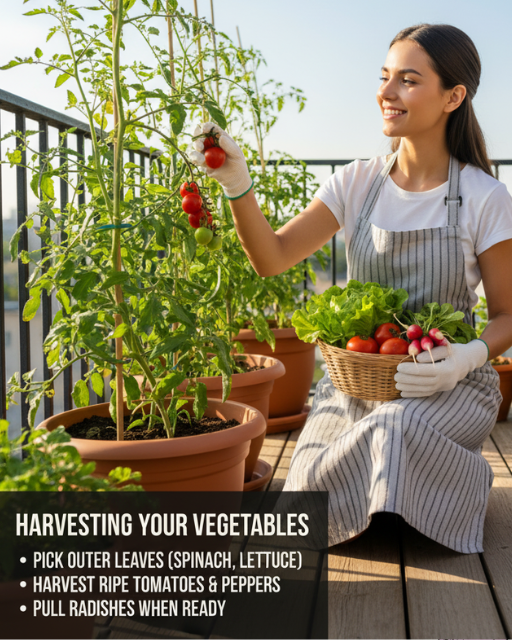
One of the best feelings is picking fresh vegetables you grew yourself.
- Harvest leafy greens, such as spinach and lettuce, by cutting the outer leaves. This allows new leaves to grow.
- Pick tomatoes and peppers when they turn bright red or green, depending on the variety.
- Pull radishes when they look big enough above the soil.
Tip: Don’t wait too long. Harvesting on time encourages plants to produce more fruit or vegetables.
Do’s and Don’ts for Beginners
Do’s:
- Start small with 2–3 vegetables.
- Use good-quality soil and compost.
- Place containers in areas with sufficient sunlight.
- Water regularly but not too much.
Don’ts:
- Don’t overcrowd pots with too many seeds.
- Don’t ignore pests – act quickly.
- Don’t use garden soil directly in pots.
Final Thoughts on Balcony Vegetable Garden Ideas for Beginners
Starting a balcony vegetable garden is not only possible but also enjoyable. With the proper containers, sunlight, soil, and a little care, even beginners can grow fresh and tasty vegetables.
Remember, gardening is about patience and learning. Don’t be afraid of small mistakes. Each step teaches you something new. Soon, you’ll be enjoying salads, curries, and snacks made with vegetables grown right on your balcony.
So, take the first step today. Pick a few pots, add soil, and plant seeds. Your balcony garden will reward you with freshness, beauty, and a sense of joy.

